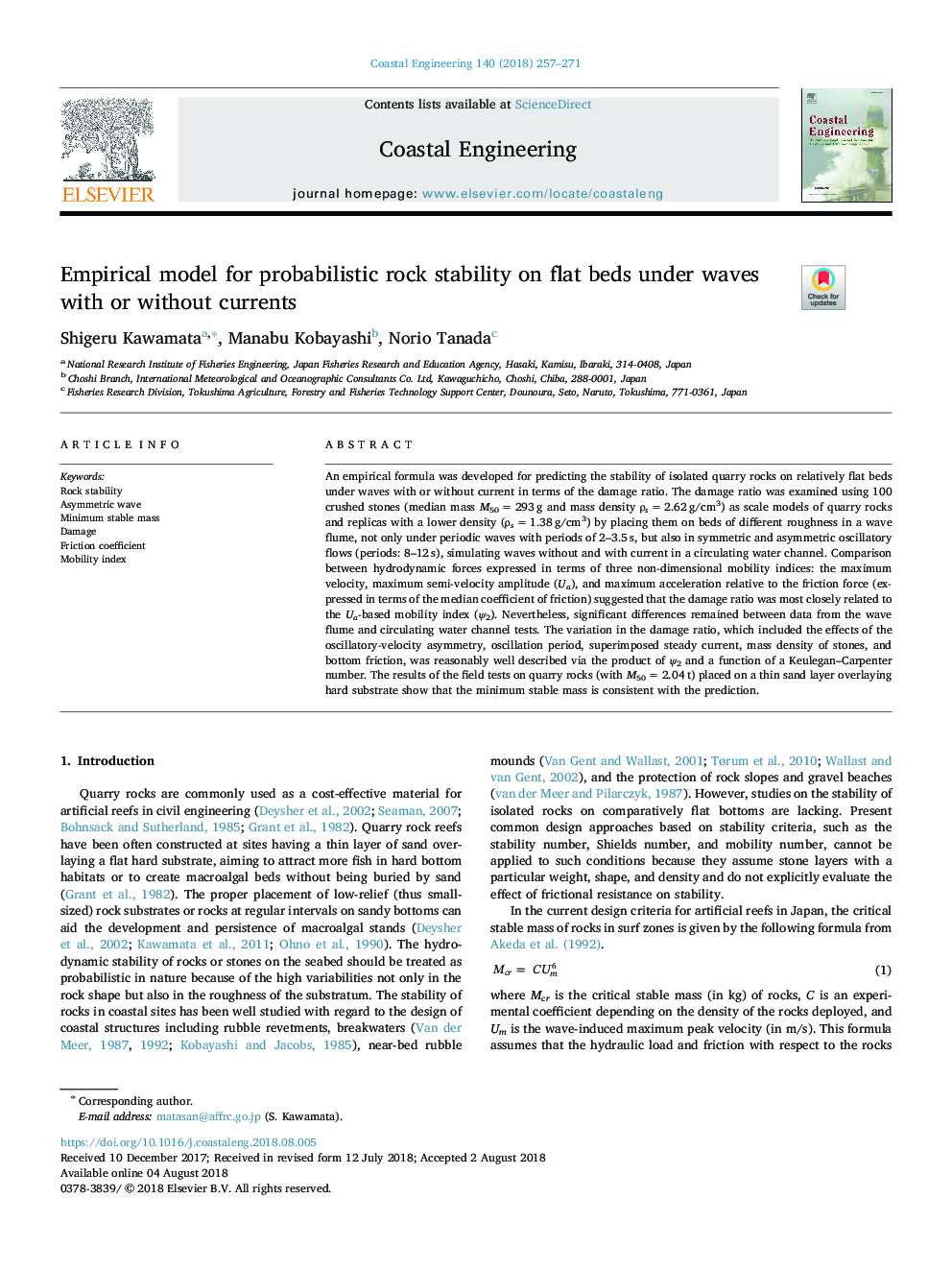| Article ID | Journal | Published Year | Pages | File Type |
|---|---|---|---|---|
| 8059440 | Coastal Engineering | 2018 | 15 Pages |
Abstract
An empirical formula was developed for predicting the stability of isolated quarry rocks on relatively flat beds under waves with or without current in terms of the damage ratio. The damage ratio was examined using 100 crushed stones (median mass M50â¯=â¯293â¯g and mass density Ïsâ¯=â¯2.62â¯g/cm3) as scale models of quarry rocks and replicas with a lower density (Ïsâ¯=â¯1.38â¯g/cm3) by placing them on beds of different roughness in a wave flume, not only under periodic waves with periods of 2-3.5â¯s, but also in symmetric and asymmetric oscillatory flows (periods: 8-12â¯s), simulating waves without and with current in a circulating water channel. Comparison between hydrodynamic forces expressed in terms of three non-dimensional mobility indices: the maximum velocity, maximum semi-velocity amplitude (Ua), and maximum acceleration relative to the friction force (expressed in terms of the median coefficient of friction) suggested that the damage ratio was most closely related to the Ua-based mobility index (Ï2). Nevertheless, significant differences remained between data from the wave flume and circulating water channel tests. The variation in the damage ratio, which included the effects of the oscillatory-velocity asymmetry, oscillation period, superimposed steady current, mass density of stones, and bottom friction, was reasonably well described via the product of Ï2 and a function of a Keulegan-Carpenter number. The results of the field tests on quarry rocks (with M50â¯=â¯2.04â¯t) placed on a thin sand layer overlaying hard substrate show that the minimum stable mass is consistent with the prediction.
Related Topics
Physical Sciences and Engineering
Engineering
Ocean Engineering
Authors
Shigeru Kawamata, Manabu Kobayashi, Norio Tanada,
